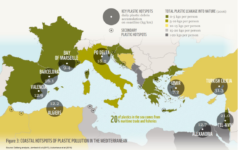Dalberg uses cookies and related technologies to improve the way the site functions. A cookie is a text file that is stored on your device. We use these text files for functionality such as to analyze our traffic or to personalize content. You can easily control how we use cookies on your device by adjusting the settings below, and you may also change those settings at any time by visiting our privacy policy page.
Tiger landscapes are major contributors to socio-economic development.
Infrastructure developments pose one of the greatest future threats to tigers and risk unravelling past conservation efforts The midway point of the 2010-2022 Global Tiger Recovery Program to double the number of wild tigers (“Tx2”) marks the first time in a century that global tiger numbers are increasing.
Poaching and habitat loss during the 20th century led to a 97 per cent fall in wild tiger numbers. Following this devastating decline, tiger range countries agreed during the 2010 Tiger Summit that ‘saving’ tigers was no longer enough. Recognizing the need for a paradigm shift in conservation action for tigers, these countries set the ambitious goal of doubling the number of wild tigers by 2022. Owing to the collective action and commitment of governments, local communities and civil society organizations, including WWF, the estimated number of tigers worldwide has increased from as few as 3,200 in 2010 to around 3,890 in 2016.
Success to date is fragile. Tigers now face a threat potentially far greater in magnitude than those we have tackled previously: linear infrastructure. Linear infrastructure often fragments wildlife habitats, which studies have argued could be the single biggest threat to low-density and wide-ranging species such as tigers. Studies have also shown that linear infrastructure leads to increased human-tiger conflict, mortality from vehicle collisions and poaching. While there have been many linear infrastructure developments in tiger range countries in the past, it is the sheer scale and speed of future development that poses one of the greatest challenges to tigers.
The Asian Development Bank estimated that between 2012 and 2020, Asia would need to spend US$8 trillion to cover its infrastructure development needs, just to sustain economic growth.9 A significant portion of this amount will likely be spent on linear infrastructure, as evidenced by the fact that an additional 11,000 kilometres of roads and railways are planned for construction through tiger landscapes.
Past conservation initiatives will no longer be sufficient on their own to protect wild tigers. Without new approaches centered on long-term sustainability, linear infrastructure development has the potential to completely unravel tiger conservation successes to date.
Whereas traditional approaches to protecting tigers, such as anti-poaching measures, monitoring of tiger populations and protected area management will continue to be important, they will no longer be enough. Any forward-looking tiger conservation policy must take into account the growing threat of infrastructure developments. Effectively addressing this challenge will require new approaches and political commitments from tiger range countries, and a strong and proactive collaboration between infrastructure planners, implementers and conservation stakeholders.
Without new approaches and political commitments centered on long-term sustainability and the integration of ecological systems into development planning, tiger populations will likely plateau, then plummet again toward extinction. Sustainable planning and construction of linear infrastructure development would also safeguard the important economic, social and environmental benefits that tiger landscapes provide.
Tiger landscapes are major contributors to socio-economic development, especially in India and Nepal, where they inject important income directly into remote rural areas, and have significant secondary impacts, such as job creation in service sectors. In India, for example, tiger tourism has been directly linked to jobs in 20 independent sectors, including mechanics, hotel staff, drivers, hairdressers, bakers and primary producers.
It is recommended that policymakers and investors in tiger range states take steps to protect tiger populations against harmful linear infrastructure developments, and support infrastructure that promotes long-term sustainable development.
There are already some ongoing good practices, which demonstrate that ecological systems can be integrated into development planning at a regional scale. However, to achieve the goal of doubling the wild tiger population by 2022, tiger range country policymakers need to make more long-term, evidence-based decisions that better take into account the needs of tiger landscapes. This includes identifying areas crucial to tigers’ survival where no infrastructure development should be allowed, and preserving corridors that are critical to tiger movement. It is also recommended that habitat rehabilitation measures, anti-poaching guidelines and monitoring of wildlife movement are integrated into planning and design processes. Multilateral development banks and investors need to adopt best practice environmental safeguards and criteria for financing linear infrastructure projects in tiger landscapes, and refrain from financing projects that are incompatible with tiger, prey and habitat conservation.






